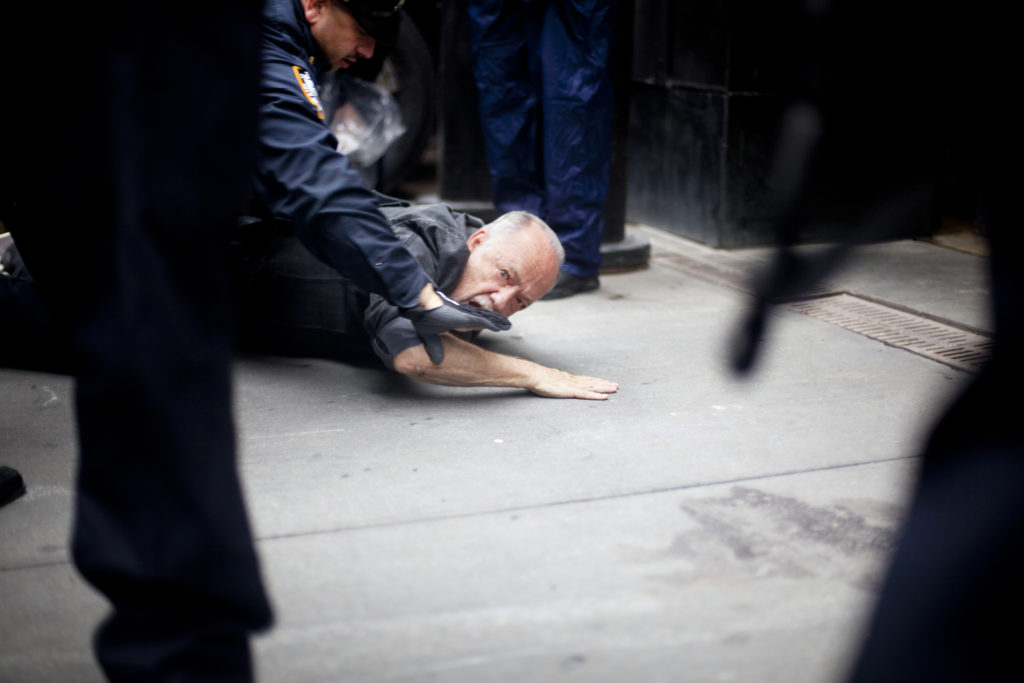“I started as a journalist to show, during the Occupy protests in Chicago, what wasn’t being shown.”
In the first part of my interview with Jon Ziegler, also known as Rebelutionary Z, we shared some tips for livestreaming. This time, I wanted to go a bit deeper and urge citizen journalists and streamers of all kinds to consider their personal livestreaming ethics.
There’s a misconception that livestreaming is always about simply showing what’s happening in an unedited, raw form. While most streamers aren’t altering their footage as it goes online in any way, they’re still making choices about what to film, who to interview, and how to frame the footage with their commentary.
I interviewed Jon for my upcoming zine on Facebook and activism. The contents will be available for free online, but my Gonzo Insiders will get a signed copy in the mail. Get in touch if you’d like to contribute.
What are livestreaming ethics?
Jon continued,
What was not being shown was the police violence and the state violence. What was and always has been shown is poor people acting out for the major networks. And there’s enough of that. Those people can then get arrested and thrown in jail for years simply for being angry one night, justifiably so, at the state.
Even before the age of viral social media, mainstream journalism thrived on the eye-catching, the controversial and the shocking. I’ve written before that I don’t believe in “neutral journalism,” in part because you choose what you cover. Photographers and writers have a responsibility to side with justice and humanity. Livestreaming ethics are even more important, because with live coverage you have to constantly be conscious about what you are or are not keeping in the frame. There’s no opportunity to go back later and remove an incriminating shot that could land someone in court or even contribute to a prison sentence.
If protesters break a window, the mainstream media will give it wall to wall coverage. Protesters’ actual demands, or their perspective on events and the police response to them, are almost never featured. That’s where the rest of us come in. As livestreamers, tweeters, and other “on the spot” reporters, we shine light on the protesters grievances, the actual scope and purpose of their actions, and how police and any opposing counterprotesters or fascist trolls respond.

Livestreaming ethics: Support activists and people, not the state
Here are a few livestreaming ethics tips, drawn from both my interview with Jon and my experience in the field:
- Respect the event. Your job as a citizen journalist isn’t to get the most dramatic or titillating footage, but to give voice to the people taking action. If possible, find out what they want or don’t want filmed. Ask permission when in doubt.
- Don’t film protesters committing “crimes.” If someone lets the air out of a cop car’s tires, point your camera elsewhere. Sometimes it’s appropriate to film deliberate, planned acts of civil disobedience, usually when you know they want the attention. But consider the next point anyway.
- Be careful about filming faces and incriminating details. This will depend on your situation. For example, a pan over a massive crowd marching through the streets is probably relatively safe in most situations, whereas a streamer should never film the faces of people engaging in a “de-arrest.” In between these two extremes of livestreaming ethics is a lot of nuance. Police and prosecutors have even used backpacks and sneakers to identify a person suspected of a crime.
- Show what the mainstream media ignores. Give activists and protesters a platform to speak in more than just a sound byte. Put current events into context by relating them to other recent and not-so-recent history. If violence or rioting do occur, document the inevitable police brutality that provoked it.
- When in doubt, film the cops. If you’re not sure if you can safely or ethically film a protest, you can almost always film the cops. Monitor their actions, record their badge numbers and other identification if visible, and document any actions that lead to escalation of tensions. You should also film and document the actions of counterprotesters and nazis, as well as the far-right “media.”
 Livestreaming Ethics With Reb Z: Citizen Journalists Must Choose A Side by Kit O’Connell is licensed under a Creative Commons Attribution 4.0 International License.
Livestreaming Ethics With Reb Z: Citizen Journalists Must Choose A Side by Kit O’Connell is licensed under a Creative Commons Attribution 4.0 International License.
Based on a work at https://kitoconnell.com/2018/07/27/livestreaming-ethics/.
This post was made possible by Kit’s patrons. One generous anonymous sponsor asks that you support Austin Pets Alive! with your time and money.
